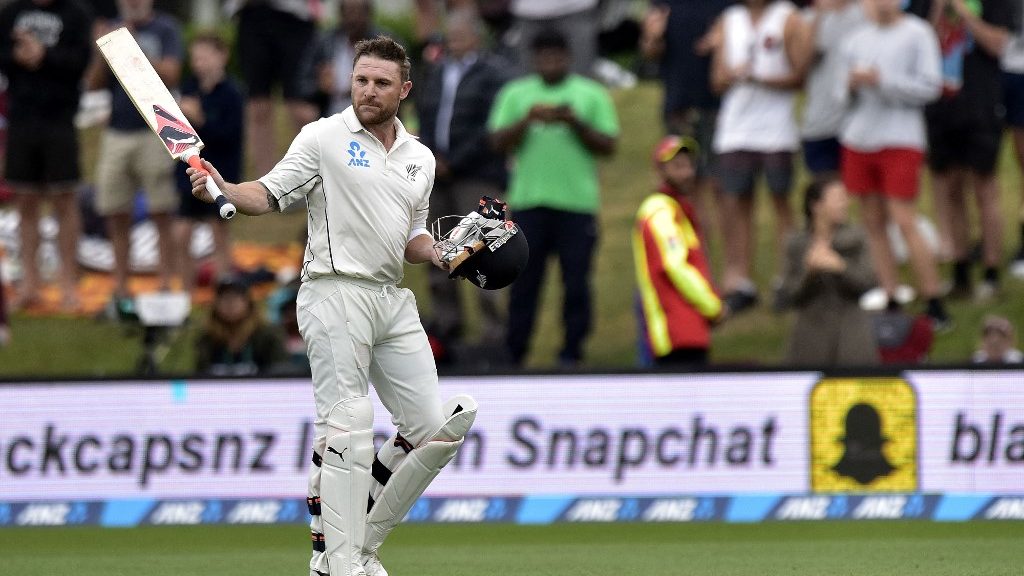Chalk and cheese: Biggest run-difference in two innings of a team in 21st century Tests

Cricket is a game of ups and downs. And, it is this roller coaster ride that makes the sport so enticing for the fans to watch. The highs and lows of the sport are more glaringly visible in Test match cricket, where the game is played over a period of 5 days.
And, there is no guarantee for a team to win even if they have done extremely well in the first innings. For, the tables can turn pretty quickly in the second essay. The vice versa is true as well, as a side can pull things back in the second innings even if things have not gone their way in the first. In this article, let us take a look at the 5 biggest differences between a team’s first innings and second innings totals in the 21st century.
5. Bangladesh (595/8d & 160) – 435 difference

Bangladesh scored 595 runs in their first innings at Wellington in January 2017 but still lost the match against New Zealand. The Kiwis won the toss and decided to field first. And, the Bangladeshi Tigers feasted on the New Zealand bowling attack in the first innings. While Shakib Al Hasan scored a belligerent 217, skipper Mushfiqur Rahim scored a sedate 159.
New Zealand plundered 539 in their first innings as well, with Tom Latham scoring a 329 ball 177. However, the Bangladeshi batting line up crumbled in the second innings. The visitors were bowled out for just 160, as Trent Boult ripped through their batting line up. New Zealand were set 217 for victory, and they reached the target with 7 wickets to spare. Kane Williamson scored an unbeaten 104 to steer his side past the finish line.
4. Pakistan (579/3d & 123) – 456 difference
Even a staunch Pakistan fan cannot predict their fate. Such is the uncertainty that surrounds Pakistani cricket. And, that uncertainty manifested itself in its full form in October 2016 at Dubai. After winning the toss and electing to bat first against the West Indies, Pakistan piled up a mammoth total of 579/3 on the board. And, the catalyst of their innings was Azhar Ali, who scored a scintillating 302. In reply, the West Indies scored 357, as Yasir Shah bagged a five-wicket haul.
In their second innings, Pakistan suffered a sensational collapse, as they were bowled out for just 123. Devendra Bishoo recorded unbelievable figures of 8/49 for the West Indies with the red cherry in hand. However, a target of 346 proved to be too much for the West Indies. The Jason Holder led side was bowled out for 289, as Pakistan won the match by 56 runs.
3. West Indies (590 & 134) – 456 difference
The West Indian side occupies third place in the list. In November 2011, India and the West Indies played out a humdinger of a Test match, where the match ended in a pulsating draw at Mumbai. The visitors batted first and piled up a humongous total of 590 runs on the board. Darren Bravo was the wrecker-in-chief, as he scored a 284 ball 166. In reply, the Indian side scored 482, with Ravichandran Ashwin scoring a quickfire 103, and Sachin Tendulkar scoring a classy 94.
However, in the second innings, the West Indian side imploded. The visitors were bowled out for a meagre total of 134. That left India with a target of 243 for victory. But then, with 2 runs required off the last ball, Ashwin was run out when he charged for the second run, meaning that the match ended in a draw.
2. India (171 & 657/7) – 486 difference

If you are an Indian cricket fan, you can never forget this match. In March 2001, India and Australia played out one of the greatest Test matches in the history of the sport at Eden Gardens in Kolkata. Australia batted first and scored 445 in their first innings, with skipper Steve Waugh scoring a masterly 110. In reply, the Indian side was bowled out for just 171, with Glenn McGrath scalping 4 wickets in his 14 overs. The Indian side was asked to follow on. And, in the second innings, VVS Laxman played arguably the greatest knock by an Indian willow wielder in the whites.
The right-hander scored a splendid 281, as India ended their second innings with their scoreboard reading 657/7. The kangaroos were set a target of 384 for victory, and the Aussie batting line up crumbled. Harbhajan Singh picked up 6 wickets, as India beat the Australian outfit by a margin of 171 runs.
1.New Zealand (192 & 680/8) – 488 difference
The first place in the list is occupied by the New Zealand side. In February 2014, New Zealand and India locked horns at Wellington. MS Dhoni won the toss and decided to field first. And, the Indian bowlers vindicated the skipper’s decision by slicing through the New Zealand batting line up. Ishant Sharma and Mohammed Shami combined to pick up all the 10 wickets, as New Zealand were bundled out for just 192. In reply, the Indian side piled up a total of 438 runs on the board, with Ajinkya Rahane scoring a masterly 118.
However, all the hopes of an Indian victory went up in smoke, as skipper Brendon McCullum scored 302, to help his side to post a total of 680/8 on the board. India was set an improbable target of 435 for victory, and they ended their second innings with their scorecard reading 166/3, and the match ended in a draw.
